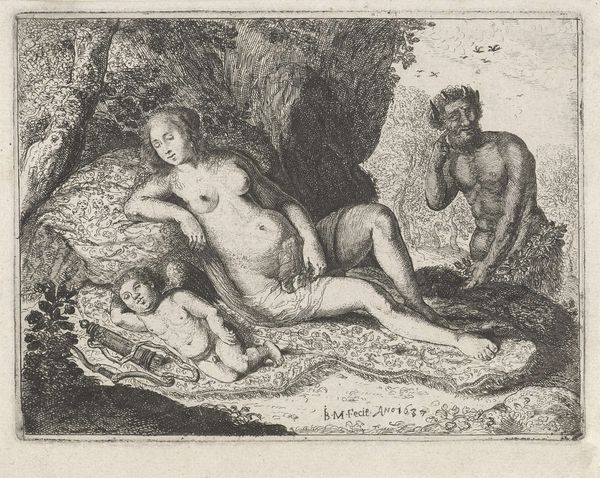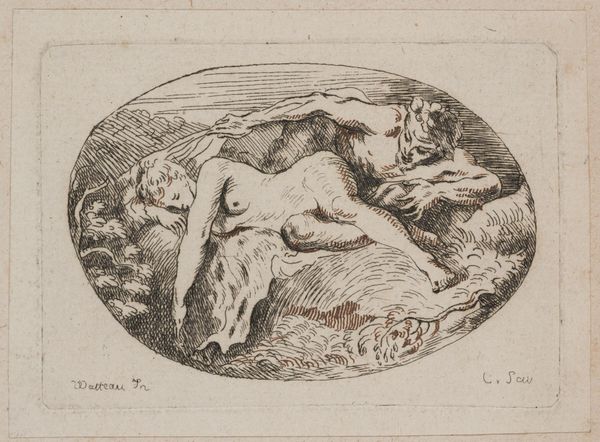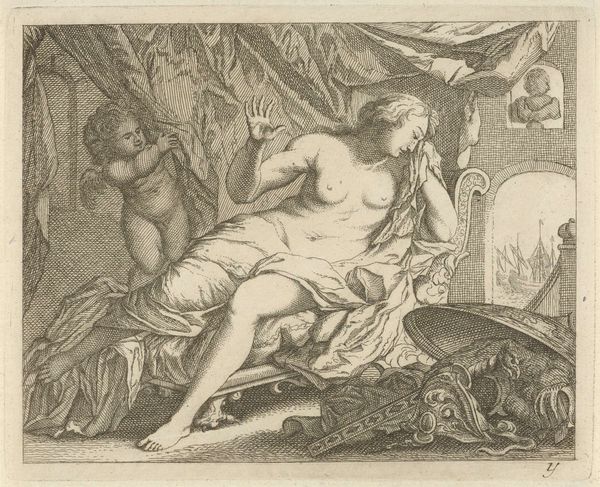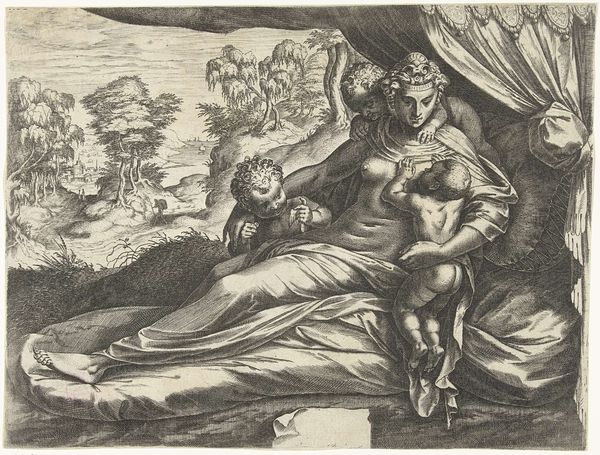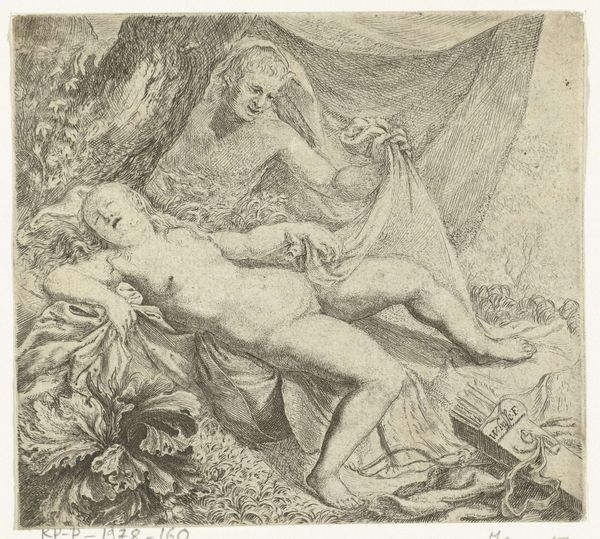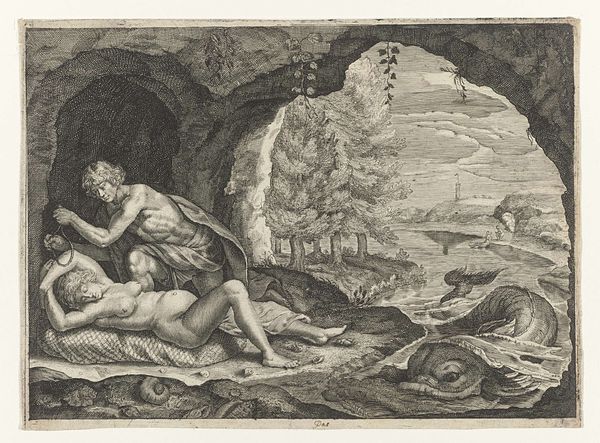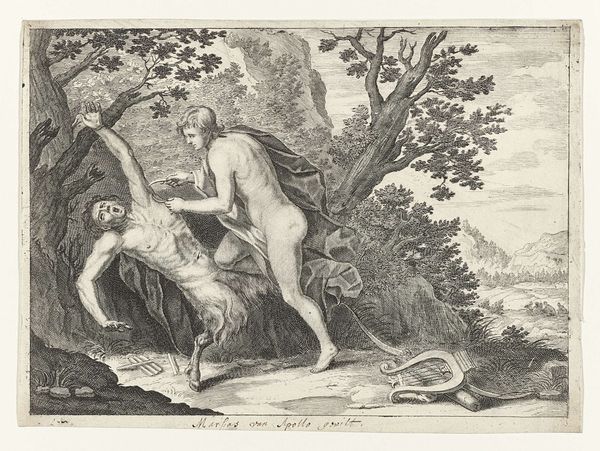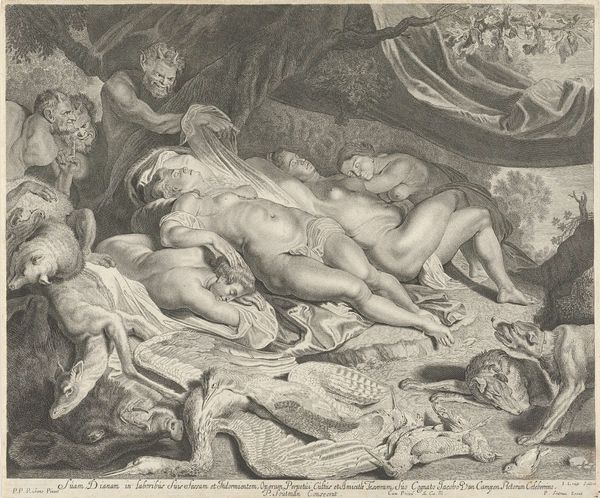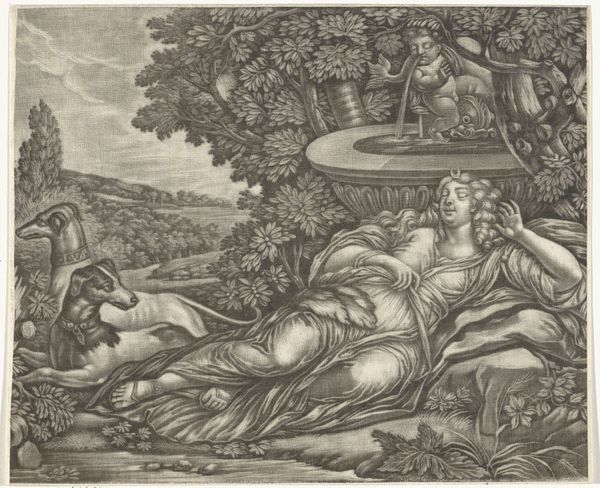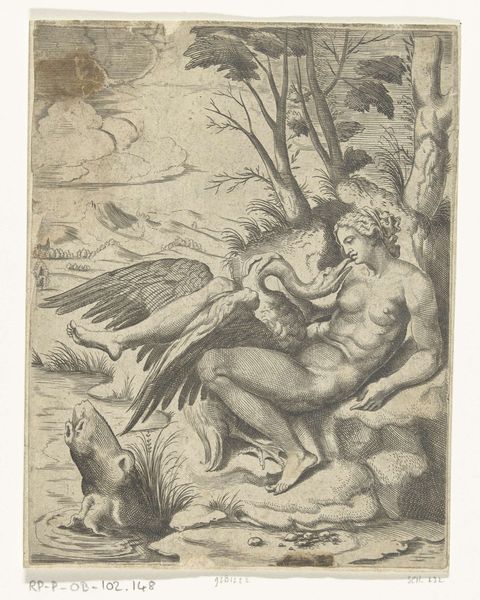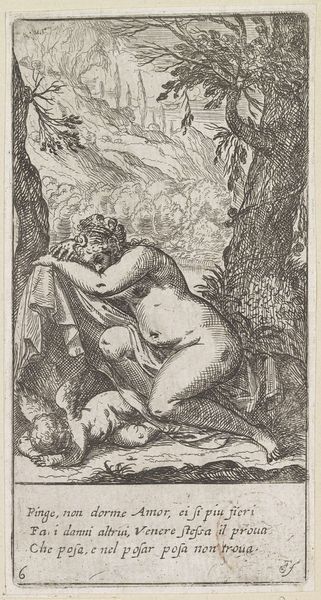
engraving
#
allegory
#
baroque
#
figuration
#
nude
#
engraving
Dimensions: height 152 mm, width 191 mm
Copyright: Rijks Museum: Open Domain
Curator: Here we have an engraving from between 1700 and 1750, titled "Wellustige sater bij een nimf," currently residing at the Rijksmuseum. It's attributed to an anonymous artist. What strikes you about it initially? Editor: The stark contrast grabs me. A luminous, almost idealized female nude is juxtaposed with this dark, coarse figure of the satyr. It feels inherently unsettling, even with the baroque aesthetic. Curator: The symbolism is indeed heavy here. The satyr, of course, represents base desire, untamed and animalistic. His dark form looming over the nymph is meant to trigger ideas of vulnerability and the loss of innocence, and perhaps allegory for civilization versus raw nature. Editor: It makes me consider the means of its production. Look closely at the lines: they're precise, deliberately etched. The engraver's labor brought forth this interplay of light and shadow, desire and apprehension, for popular consumption. How might the viewing public, newly acquainted with reproducible images, interpret it, and did it further codify certain ideals of gender and desirability? Curator: It's impossible to ignore the period context, particularly with respect to depictions of women. This work can also evoke classical themes of temptation. Notice the fabric, draped artfully, suggesting modesty even in nudity. How much agency, if any, does this nymph possess within the allegorical encounter? Or is she simply a representation of idealized purity defiled? Editor: I'm struck, too, by the relative availability of printed works versus unique paintings for consumption at the time. This piece presents what was, at the time, state-of-the-art in mechanical production. These multiple and mobile prints introduced sophisticated ideas to many patrons that would have not otherwise encountered them, but which reinforced contemporary concepts through wider viewership. Curator: It definitely offers a complex web of social, material, and psychological interpretations. Thank you. Editor: A truly striking commentary. The artistic rendering of allegory and the processes behind making such works both help us contextualize a time period, while inviting new interpretations, thanks to changes in modern societal values.
Comments
No comments
Be the first to comment and join the conversation on the ultimate creative platform.
